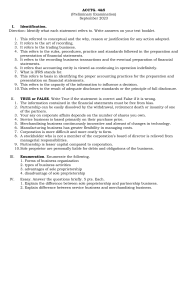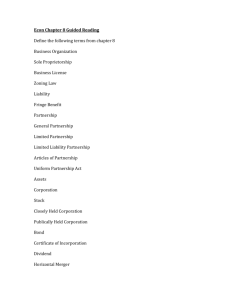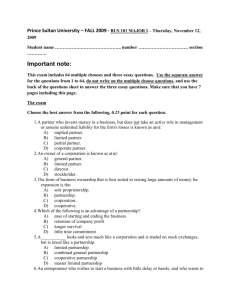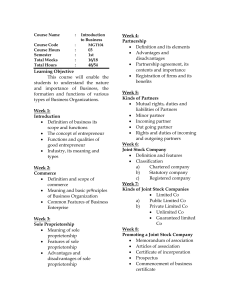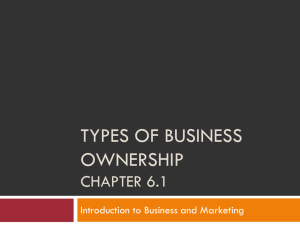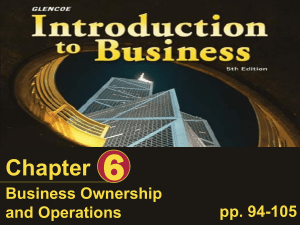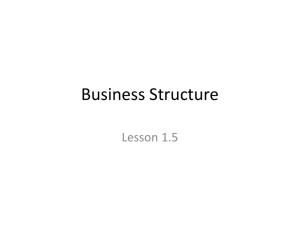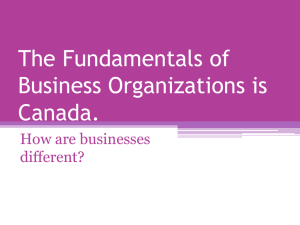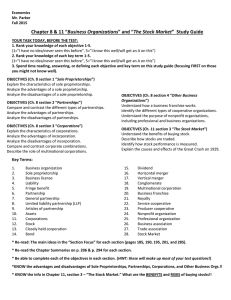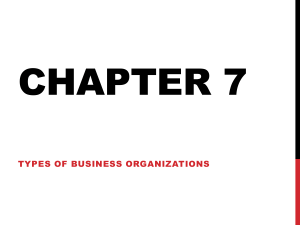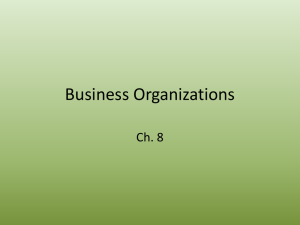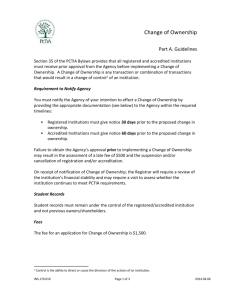Study Guide
advertisement
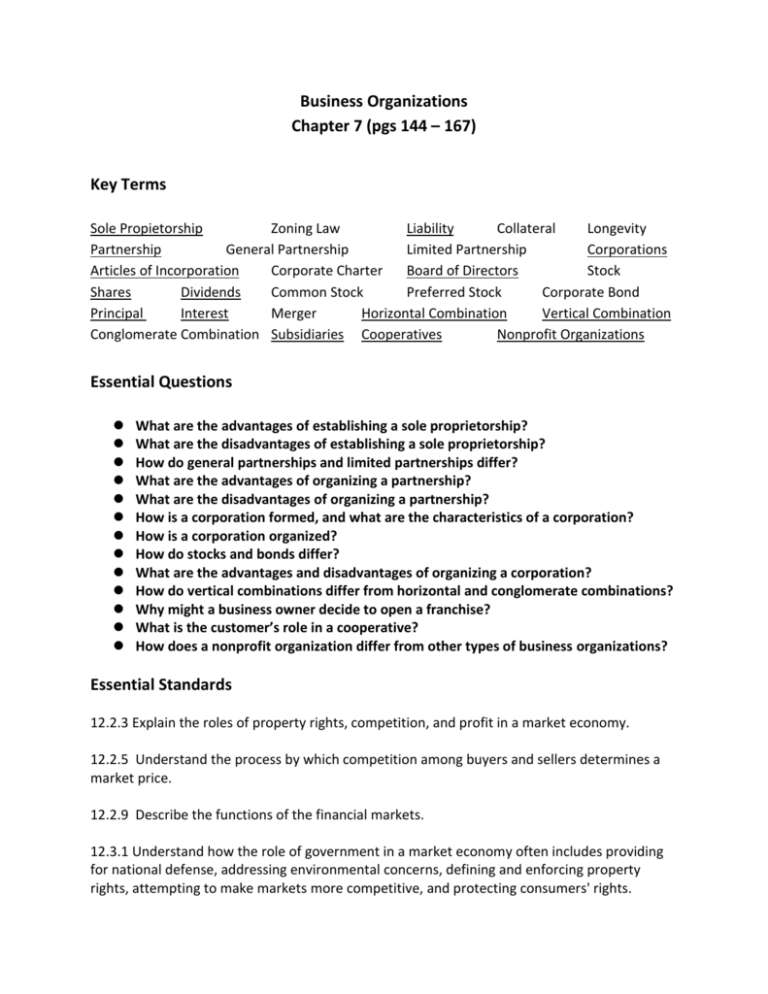
Business Organizations Chapter 7 (pgs 144 – 167) Key Terms Sole Propietorship Zoning Law Liability Collateral Longevity Partnership General Partnership Limited Partnership Corporations Articles of Incorporation Corporate Charter Board of Directors Stock Shares Dividends Common Stock Preferred Stock Corporate Bond Principal Interest Merger Horizontal Combination Vertical Combination Conglomerate Combination Subsidiaries Cooperatives Nonprofit Organizations Essential Questions What are the advantages of establishing a sole proprietorship? What are the disadvantages of establishing a sole proprietorship? How do general partnerships and limited partnerships differ? What are the advantages of organizing a partnership? What are the disadvantages of organizing a partnership? How is a corporation formed, and what are the characteristics of a corporation? How is a corporation organized? How do stocks and bonds differ? What are the advantages and disadvantages of organizing a corporation? How do vertical combinations differ from horizontal and conglomerate combinations? Why might a business owner decide to open a franchise? What is the customer’s role in a cooperative? How does a nonprofit organization differ from other types of business organizations? Essential Standards 12.2.3 Explain the roles of property rights, competition, and profit in a market economy. 12.2.5 Understand the process by which competition among buyers and sellers determines a market price. 12.2.9 Describe the functions of the financial markets. 12.3.1 Understand how the role of government in a market economy often includes providing for national defense, addressing environmental concerns, defining and enforcing property rights, attempting to make markets more competitive, and protecting consumers' rights.

